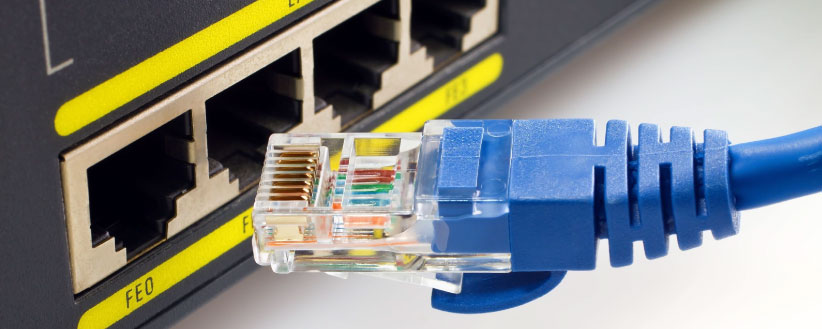Thanks to the Internet of Things (IoT) technology, buildings and cities are becoming more and more intelligent. By the end of 2021, experts reported that 35 billion IoT devices were installed worldwide. By 2030, it is predicted that 125 billion will be online.
In most smart buildings and large enterprises, intelligent devices (from relatively simple VoIP phones to PTZ conferencing cameras to state-of-the-art LED lighting systems) are connected using Power over Ethernet (PoE) for two main reasons.
Why?
Because PoE uses a single Ethernet cable to deliver both power and data to IoT devices, eliminating the need for separate cables for power and data. And because it is safe.
A Brief History of PoE
PoE has been around since 2003, when the Institute of Electrical and Electronics Engineers (IEEE—pronounced “I Triple E”) ratified their 802.3af (Type 1) standard that delivers up to 15.4 watts (W), with 13W available for the device. Next came the 802.3at (Type 2) standard that delivers up to 30W, with 25.5W accessible to the device. Finally, in 2018, the 802.3bt (Type 3 and Type 4) standard was defined and delivers 60W and 100W, respectively.
At the lower wattage levels for Type 1 and Type 2 PoE, safety was never really a question. However, Type 3 and Type 4 PoE standards of 60W to 100W have caused people to wonder about safety.
PoE Safety Protocols
PoE technology has several built-in safety features that protect legacy equipment from damage and users from electrical power hazards. Bottom line: PoE is inherently safe. Here’s why:
- Properly installed PoE technology uses Ethernet cables equipped with RJ45 connectors that protect users from the inner wires in the cable.
- PoE power sourcing equipment (PSE), such as PoE switches and PoE injectors, is built to extend a “handshake” with the powered device (PD). The purpose of this handshake is to determine how much power the PD needs to operate safely. If the handshake is successful, the PSE will establish how much power is required; then, the PD will be fully powered up.
- If the handshake is unsuccessful, no connection is made, and no power is delivered, thus, protecting the PD from damage.
- Once the PD is successfully connected, the PSE constantly monitors the flow of electricity. The connection is immediately shut down should the current go too high or too low. Note: This safety feature is significantly different from an AC wall outlet, which supplies a continual stream of electricity that is an electrical shock hazard.
Is high wattage PoE safe?
The wattage standards for Type 1 and Type 2 PoE (IEEE 802.3af/at) max out at 30W, which is high enough to be efficient, but low enough to be safe.
But what about levels of 60W or higher?
These higher PoE standards (IEEE 802.3bt) have a potential heat hazard that needs to be addressed. According to international cable infrastructure company Fluke Networks:
So, if PoE is safe, why is it addressed in the NEC for power above 60W? There is still the potential hazard caused by heat being generated by PoE within cable bundles that can cause insertion loss and cable degradation over time, preventing proper data transmission. And with everything from phones and security devices to life safety systems connecting to and being powered over the network, a loss of signal can certainly become a life safety issue. That is one reason why the NEC specifies the number of cables allowed in a bundle based on conductor size and temperature rating for 60W or higher PoE or requires the use of Limited Power (LP) cable.
To ensure the longevity and safety of high-power PoE cabling, choose the following:
- High-quality, shielded cables
- Cabling with a large conductor and a solid metal body
- Smaller bundle size
Conclusion
While PoE is inherently safe, it is still essential to take precautions when dealing with any electrical system. Always be wary of uncapped or unshielded wires and treat all connected PoE cables like live wires—because they are! Use caution and shut off the power before working on any equipment.
Read more Post At TimeBusinessPost








